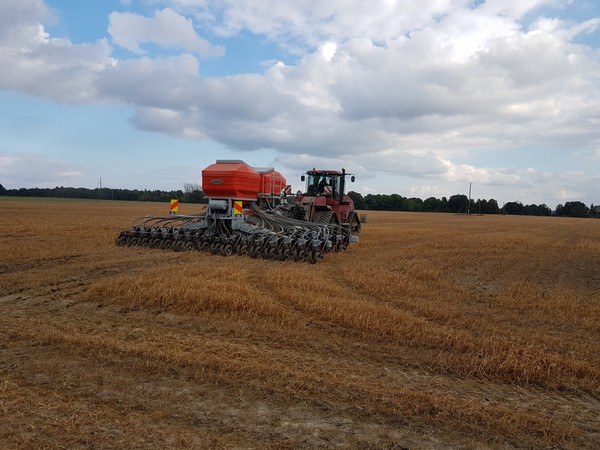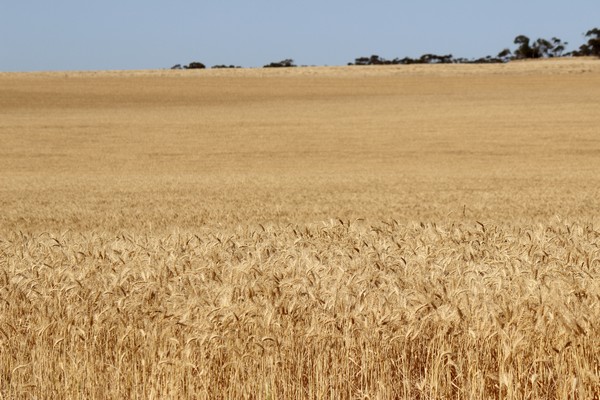CROSS SLOT® IS REGENEREATIVE AGRICULTURE
Sustainable agriculture is farming in sustainable ways, which means meeting society's food and textile present needs, without compromising the ability of future generations to meet their needs.
wikipedia.org
Regenerative agriculture is a conservation and rehabilitation approach to food and farming systems. It focuses on topsoil regeneration, increasing biodiversity, improving the water cycle, enhancing ecosystem services, supporting biosequestration, increasing resilience to climate change, and strengthening the health and vitality of farm soil.
On a regenerative farm, yield should increase over time. wikipedia.org
There is a huge difference between Sustainable farming and Regenerative Farming!
Regenerative soil health is all about restoring biological activity to the soil.
Cross Slot specialises in Regenerative Soil Health through Low Disturbance No-Tillage (LDNT).
- Cross Slot LDNT minimises soil disturbance. All soil disturbance (no matter how small) oxidises the labile (free) carbon in the soil organic matter (SOM) into CO2 that is lost to the atmosphere. Up to 20% of existing atmospheric CO2 has come from farmers ploughing the world’s arable soils to feed itself. Already the world has lost 75% of the SOM from its arable soils in this manner, which is serious because arable soils provide 85% of the world’s food.

- SOM is also the main source of energy for soil microbes. Without SOM, microbes die and soil becomes unproductive. Many farmers try to compensate by applying ever-increasing amounts of fertilizer.
- Cross Slot LDNT retains soil water vapour (humidity) which is also a key source of energy for seeds & soil microbes. Cross Slot openers are especially designed to trap soil humidity in the pore spaces between soil particles. To do this in the seed zone, Cross Slot invented inverted-T-shaped seed slots. Competing no-tillage openers cause varying amounts of soil disturbance resulting in evaporation of water vapour and CO2 from the seed zone.
- Not only does soil humidity nourish soil microbes, it is capable on its own (i.e. without the help of liquid water) of germinating seeds, which is why Cross Slot LDNT openers seldom experience seedling emergence failures.
- Cross Slot LDNT facilitates the recapture of carbon that has already been discharged into the atmosphere and recycles it back into the soil. Growing plants absorb CO2 from the atmosphere in significant amounts to create carbohydrates. This carbon finds its way back into the soil by three main mechanisms:
- Directly in the form of root exudates,
- Indirectly when roots form beneficial relationships with mycorrhizal fungi, and
- Indirectly by decomposition of the residues (dead leaves, stalks, seed coats and stubble) on the surface of the ground that are taken into the soil by earthworms and other soil fauna. For this to occur, Cross Slot openers are designed to handle large amounts of surface resides when sowing seed without blockage and with minimal disturbance.
- Cross Slot LDNT repairs damaged soil structure. Soil structure is the aggregation of primary soil particles into crumb-like clusters using glue-like substances exuded by soil microbes and earthworms. These aggregates create humid pore spaces between them that roots expand into, exchange gases with, gain anchorage from and derive nutrients and water from. Aggregated soil structure resists wind and water erosion and provides a strong physical support platform for animal and vehicle traffic without cementing themselves into a hard pan or puddling when wet.
It is well known that if a formerly tilled and cropped arable soil is retired and allowed to grow wild and unharvested species for several years, it will naturally regenerate itself into a healthy state in response to accumulating SOM. The economic cost is the lost opportunity to grow any harvestable arable crops during this period of regeneration.
But Cross Slot LDNT changes all of that.
Cross Slot allows farmers to regenerate the health of their soils while continuing to grow productive arable crops without the need for a period of inactivity. It does this by recycling the carbon-rich resid ues from each previously harvested arable crop (or cover crop) back into the soil. New Zealand research (confirmed by USA and UK farmer practice) has shown that double-cropping by the Cross Slot LDNT system can raise both soil organic carbon and nitrogen levels by 30% over 3 years and 50% over 10 years, without losing a single cent of lost production. In fact crop yields have usually increased in response to increasing SOM levels.
ues from each previously harvested arable crop (or cover crop) back into the soil. New Zealand research (confirmed by USA and UK farmer practice) has shown that double-cropping by the Cross Slot LDNT system can raise both soil organic carbon and nitrogen levels by 30% over 3 years and 50% over 10 years, without losing a single cent of lost production. In fact crop yields have usually increased in response to increasing SOM levels.
Furthermore, because Cross Slot LDNT specialises in trapping moisture vapour in the slot zone, it is the perfect way for introducing new bio-cultures bred especially to recolonise soils that have lost much of their microbes through tillage-induced oxidation of the SOM
The coming revolution in arable agriculture will centre on re-colonising low-biology soils with new microbial cultures using LDNT instead of adding endless amounts of inorganic fertilizers in a futile attempt to compensate for the loss of biology and crop yield.
In arable soils – biology is king!.
